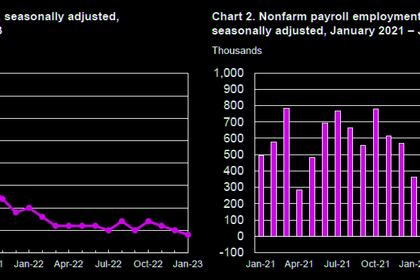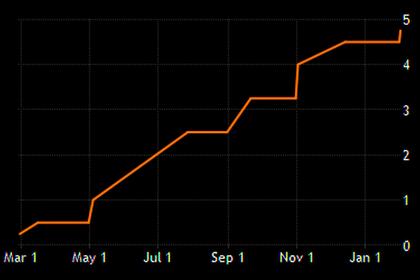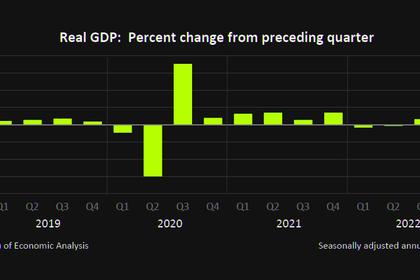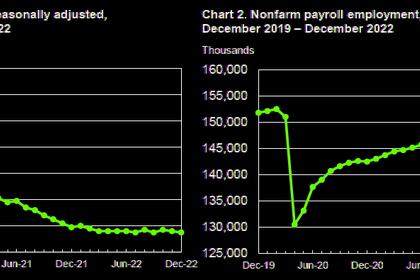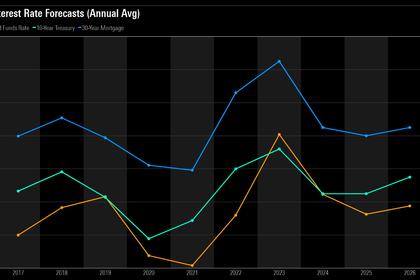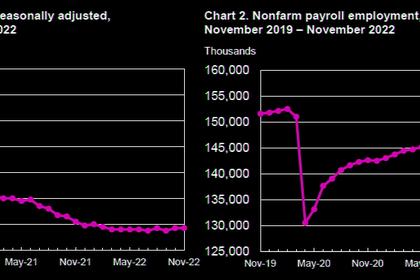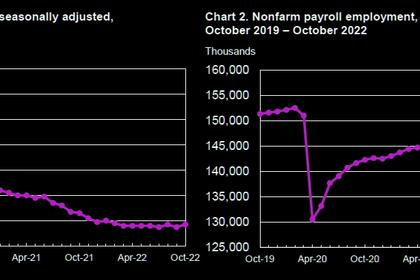
U.S. GDP UP BY 2.7%
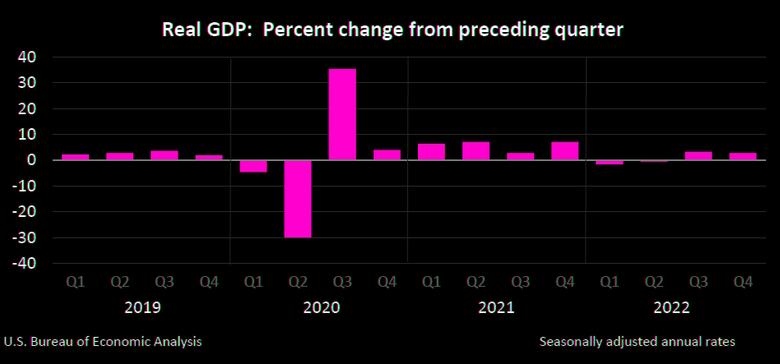
U.S. BEA- February 23, 2023 - Gross Domestic Product, Fourth Quarter 2022 and Year 2022 (Second Estimate)
Real gross domestic product (GDP) increased at an annual rate of 2.7 percent in the fourth quarter of 2022 (table 1), according to the "second" estimate released by the Bureau of Economic Analysis. In the third quarter, real GDP increased 3.2 percent.
The GDP estimate released today is based on more complete source data than were available for the "advance" estimate issued last month. In the advance estimate, the increase in real GDP was 2.9 percent. The updated estimates primarily reflected a downward revision to consumer spending that was partly offset by an upward revision to nonresidential fixed investment (refer to "Updates to GDP").
Imports, which are a subtraction in the calculation of GDP, were revised up.
The increase in real GDP in the fourth quarter reflected increases in private inventory investment, consumer spending, nonresidential fixed investment, federal government spending, and state and local government spending that were partly offset by decreases in residential fixed investment and exports.
Imports decreased (table 2).
The increase in private inventory investment was led by manufacturing (mainly petroleum and coal products) as well as mining, utilities, and construction industries (led by utilities). The increase in consumer spending reflected an increase in services that was partly offset by a decrease in goods.
Within services, the increase was led by health care as well as housing and utilities. Within goods, the leading contributor to the decrease was "other" durable goods (mainly jewelry). Within nonresidential fixed investment, increases in intellectual property products (mainly software) and structures were partly offset by a decrease in equipment. Within federal government spending, the increase was led by nondefense spending. The increase in state and local government spending primarily reflected an increase in compensation of state and local government employees.
Within residential fixed investment, the leading contributors to the decrease were new single-family construction and brokers’ commissions. Within exports, a decrease in goods (led by nondurable goods excluding petroleum) was partly offset by an increase in services (led by travel as well as transport).
Within imports, a decrease in goods (led by durable consumer goods) was partly offset by an increase in services (led by travel).
Compared to the third quarter, the deceleration in real GDP in the fourth quarter primarily reflected a downturn in exports and decelerations in consumer spending, nonresidential fixed investment, and state and local government spending. These movements were partly offset by an upturn in private inventory investment, a smaller decrease in residential fixed investment, and an acceleration in federal government spending. Imports decreased less in the fourth quarter than in the third quarter.
Current-dollar GDP increased 6.7 percent at an annual rate, or $421.1 billion, in the fourth quarter to a level of $26.15 trillion, an upward revision of 0.2 percentage point, or $12.5 billion, from the previous estimate.
The price index for gross domestic purchases increased 3.6 percent in the fourth quarter, an upward revision of 0.4 percentage point from the previous estimate. The personal consumption expenditures (PCE) price index increased 3.7 percent, an upward revision of 0.5 percentage point. Excluding food and energy prices, the PCE price index increased 4.3 percent, an upward revision of 0.4 percentage point.
Personal Income
Current-dollar personal income increased $388.1 billion in the fourth quarter, an upward revision of $77.1 billion from the previous estimate. The increase primarily reflected increases in compensation (led by private wages and salaries) and government social benefits (table 8). Within government social benefits, the increase primarily reflected an increase in "other" benefits reflecting state stimulus payments to individuals in the form of one-time refundable tax credits.
Disposable personal income increased $392.1 billion, or 8.6 percent, in the fourth quarter, an upward revision of $95.1 billion from the previous estimate. Real disposable personal income increased 4.8 percent, an upward revision of 1.5 percentage points from the previous estimate.
Personal saving was $755.0 billion in the fourth quarter, an upward revision of $101.3 billion from the previous estimate. The personal saving rate—personal saving as a percentage of disposable personal income—was 3.9 percent in the fourth quarter, an upward revision of 0.5 percentage point from the previous estimate.
-----
Earlier:
